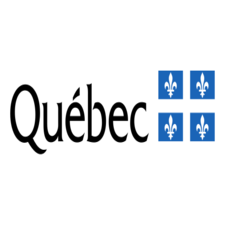Lidar
Type of resources
Topics
Keywords
Contact for the resource
Provided by
Formats
Representation types
Update frequencies
status
-

Lidar point cloud data with classifications – unclassified (1), ground (2), low vegetation (3), medium vegetation (4), high vegetation (5), buildings (6), low point - noise (7), reserved – model keypoint (8), high noise (18).
-

The LiDAR Point Clouds is a product that is part of the CanElevation Series created to support the National Elevation Data Strategy implemented by NRCan. This product contains point clouds from various airborne LiDAR acquisition projects conducted in Canada. These airborne LiDAR acquisition projects may have been conducted by NRCan or by various partners. The LiDAR point cloud data is licensed under an open government license and has been incorporated into the National Elevation Data Strategy. Point cloud files are distributed by LiDAR acquisition project without integration between projects. The point cloud files are distributed using the compressed .LAZ / Cloud Optimized Point Cloud (COPC) format. The COPC open format is an octree reorganization of the data inside a .LAZ 1.4 file. It allows efficient use and visualization rendering via HTTP calls (e.g. via the web), while offering the capabilities specific to the compressed .LAZ format which is already well established in the industry. Point cloud files are therefore both downloadable for local use and viewable via URL links from a cloud computing environment. The reference system used for all point clouds in the product is NAD83(CSRS), epoch 2010. The projection used is the UTM projection with the corresponding zone. Elevations are orthometric and expressed in reference to the Canadian Geodetic Vertical Datum of 2013 (CGVD2013).
-

Lidar point cloud data with classifications – unclassified (1), ground (2), low vegetation (3), medium vegetation (4), high vegetation (5), buildings (6), low point - noise (7), reserved – model keypoint (8), high noise (18).
-

LiDAR Derived Digital Elevation Models available at a 1m resolution in New Brunswick Stereographic Double Projection (NBSDP). LiDAR Derived Digital Elevation Models and Digital Surface Models available at 1m or 2m resolutions from NRCAN in Universal Transverse Mercator (UTM).
-

3D topographic representation of the territory in the form of a point cloud. LiDAR (Light Detection and Ranging) technology makes it possible to represent the Earth's surface topographically in three dimensions using a laser system mounted on board an aircraft. The very large number of 3D points recorded (up to 400,000 per second) makes it possible to obtain a multitude of details at the level of the ground and surface elements. LiDAR technology quickly, easily, and above all accurately provides the altitude of ground details and elements above ground, even in the presence of dense vegetation. The uses are: creation of a digital terrain model (MNT), creation of level curves, creation of level curves, volume calculation, planning, calculation of tree heights, mapping of building roofs, 3D modeling of cities, etc. Source: XEOS Imaging Inc. **This third party metadata element was translated using an automated translation tool (Amazon Translate).**
-

Polygons representing a snapshot of buildings throughout New Brunswick. Data is derived from provincial LiDAR data acquired between 2015 and 2018 and include buildings present at the time of LiDAR collection.
-

A grid of cells 1 km by 1 km covering the areas of New Brunswick where lidar data has been collected. Each grid cell includes a link to download lidar data.
-

__The link: *Access the data directory* is available in the section*Dataset Description Sheets; Additional Information*__. The polygonal layer of lidar slope classes expresses the slope of the terrain. The slopes are generated from a digital terrain model (DTM) with a resolution of 10 meters. The latter is the result of an aggregation by bilinear interpolation of lidar NCDs at 1 m. The minimum area of the resulting polygons is 0.2 hectares. Lidar digital slopes are divided into 7 classes. + A - Null by [0 to 3]% + B - Low from] 3 to 8]% + C - Soft from] 8 to 15]% + D - Moderate [from] 15 to 30]% + E - Strong from] 30 to 40]% + F - Steep from] 40 to ∞ [% + S — Summit completely surrounded by F slopes This map covers the entire territory of the Southern Quebec Ecoforest Inventory (IEQM) and was developed in order to provide stakeholders with the tools they need when applying for financial assistance from the Forest Management Investment Program (PIAF). __We do not recommend using the information in this layer for detailed analysis. __**This third party metadata element was translated using an automated translation tool (Amazon Translate).**
-

__The link: *Access the data directory* is available in the section*Dataset Description Sheets; Additional Information*__. The **dendrometric lidar map** presents various dendrometric characteristics useful in particular in forest planning. It is a product in vector format that is complementary to the results of forest compilations found in the [Original Ecoforest Map and Current Inventory Results] (https://www.donneesquebec.ca/recherche/dataset/resultats-d-inventaire-et-carte-ecoforestiere) and in the [Results of forest compilations by forel] (https://www.donneesquebec.ca/recherche/dataset/compilations-forestieres-originales-par-forel-methode-k-nn). The geometric entities defined from the lidar data are at a finer scale than those in the ecoforest map. The main variables predicted and accessible in the product are as follows: + Usable volume per hectare by species, species group and certain diameter groups + Volume per hectare distributed by product for certain species groups + Basal area and number of stems per hectare for certain species groups + Average usable volume per rod and average diameter for certain species groups The volumes compiled in the lidar dendrometric map are variables distinct from the gross standing market volume predicted in the other forest compilation results, in the [Cubing rate and prediction models] ] (https://www.donneesquebec.ca/recherche/dataset/tarif-de-cubage) and for the stems counted in the sample plots of the ecoforest inventory of southern Quebec, for example in the [Temporary sample plots of the fifth inventory] (https://www.donneesquebec.ca/recherche/dataset/placettes-echantillons-temporaires-du-cinquieme-inventaire). This distinct volume is here qualified as “usable” and it excludes woody material between 9.1 cm in diameter without bark and 9.1 cm with bark. The published literature clarifies the differences between volume variables. This product is available for territories (planning unit, private forest development agency or residual forest territory) with a lidar acquisition and affecting the bioclimatic domains of fir to yellow birch, fir to white birch and spruce moss. Product coverage is not complete and will evolve over the years depending on the lidar acquisition. __ ⚠️ Notes: __ It is possible to use the [lidar dendrometric data preparation tool] (https://www.donneesquebec.ca/recherche/dataset/carte_dendrometrique_lidar/resource/d447ac59-8310-4fad-95f7-7495a3624466) to study one or more sectors at a finer scale than that of the ecoforest map. The [Lidar dendrometric tool user guide] (https://mrnf.gouv.qc.ca/nos-publications/guide-outil-dendrometrique-lidar/) presents the methodology for its application to meet the needs of operational forest harvest planning.**This third party metadata element was translated using an automated translation tool (Amazon Translate).**
-

__The link: *Access the data directory* is available in the section*Dataset Description Sheets; Additional Information*__. In 2020, the Forest Inventory Directorate of the Ministry of Natural Resources and Forests (MRNF) began the production of vector layers of riparian ecotones. This type of layer is produced using a series of geomatic tools that use the canopy height model (MHC) and the topographic humidity index (TWI) produced from aerial LiDAR, as well as data from the ecoforest map of southern Quebec. The development of the tools and their configuration were carried out in collaboration with the forest hydrology laboratory at Laval University. The layer thus produced aims to delimit riparian ecotones, which are defined as [_ “a transition zone between the aquatic environment and the forest, characterized by muscinal, herbaceous or shrubby vegetation in wetlands and sometimes including a few scattered trees” _] (https://mffp.gouv.qc.ca/RADF/guide/chapitre-i/article-1/). The layer produced defines the area where a significant change in tree heights is observed on the MHC LiDAR. However, if deforestation, agricultural fields, or natural disturbances are adjacent to a body of water, no change in tree heights is observed. In these cases, the tool instead uses potential water accumulation data from the Topographic Humidity Index (TWI), as well as data from the ecoforest map, to delineate riparian ecotones. On the other hand, the tool does not make it possible to filter all of these exceptional cases and we thus find a few “false coastal ecotones” in the layer. For example, deforested land along a body of water can sometimes be included in the ecotone layer. Before using these data, it is therefore recommended to plan validation work by photo-interpretation or by means of field visits. It should also be noted that ecotone data is primarily used to support forest mandates such as the delineation of buffer zones along watercourses. Therefore, they are not contours of wetlands within the meaning of the Act respecting the conservation of wetlands and bodies of water. **This third party metadata element was translated using an automated translation tool (Amazon Translate).**
 Arctic SDI catalogue
Arctic SDI catalogue